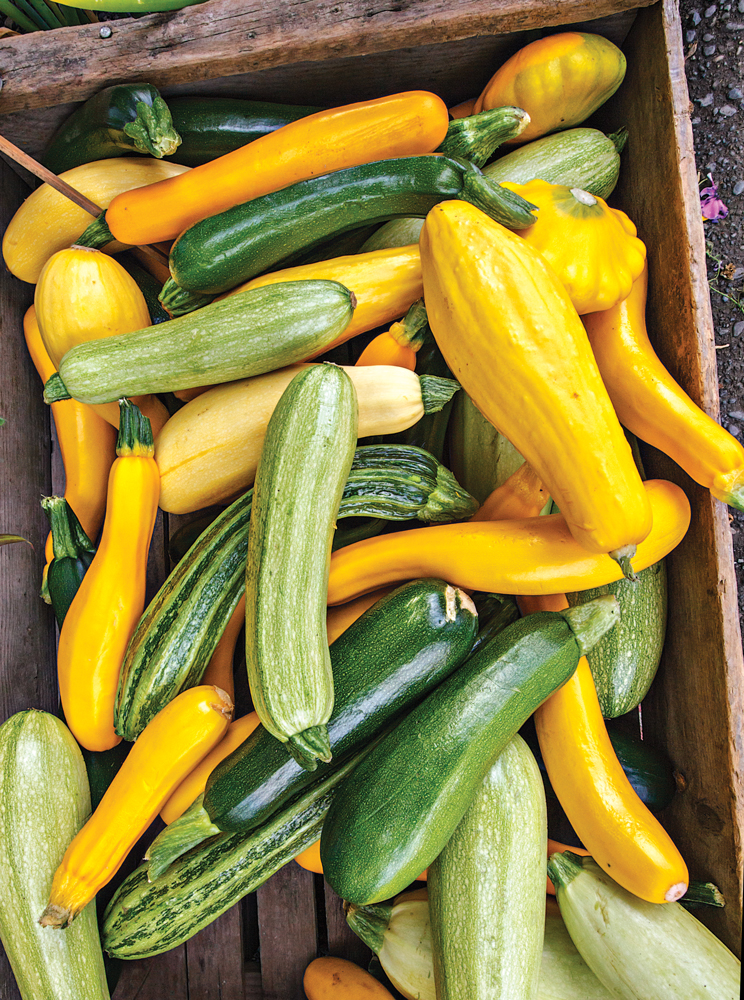Versatility in the kitchen
Both chefs and home cooks love summer squash for their many different uses – they can be eaten fresh, roasted, fried, grilled, stuffed, pickled and grated into baking – the latter is useful for sneaky parents to get their kids to eat vegetables without even knowing it. Deb Krause, who grows many different types of summer squash at Vesta Gardens, which supplies some of Edmonton’s top restaurants, has tried all sorts of preparations. “I’m currently in love with the zucchini noodles that you put through the spiralizer,” she says. “But all things considered, the scallop [pattypan] squashes are my favourite… I find that they don’t have as much water as traditional zucchini does, so they grill up nicer; they don’t get as soft. I think they’re perfect for summer cooking, on barbecues and grills.”
3 in 1
Summer squashes are a favourite of gardeners because they are super prolific and offer three different crops in one plant. The edible blossoms come first, which are commonly stuffed and deep fried in Italian cuisine. Then there’s the fresh squash itself, picked when the skin is thin. Or, if left on the vine, many summer squashes will develop a thick skin and can be stored for longer periods, as most are the same species as pumpkins (Cucurbita pepo).
Recipe: Roasted Summer Squash Macaroni and Cheese
Courtesy of Steven Brochu, Chartier
Ingredients
- 4 zucchini or 6 medium-sized pattypan squash
- 2 cups of macaroni noodles
- 1 tbsp olive oil
- 1 tbsp chopped garlic
- 4 tbsp chopped shallots
- 100 ml white wine or chicken stock
- 1 cup heavy cream
- 1 cup cheddar cheese, grated
- 1 cup cheese curds
- 2 tbsp bacon fat, duck fat or butter
- salt and pepper to season
Instructions
- Roughly chop up squash and season with olive oil, salt and pepper; roast in a 350-degree Fahrenheit oven until golden and soft when pricked with a fork.
- Remove from oven and cover with clean tea towel or lid. Let sit for 30 minutes.
- Transfer to blender and blitzing until the mix is smooth.
- Meanwhile, cook macaroni in salted, boiling water – strain and toss in one tsp canola oil to prevent noodles from sticking together when done.
- Heat one tbsp olive oil in a deep pan over medium heat; add garlic and shallot, sauté until translucent.
- Add white wine or chicken stock and cook over medium heat until liquid is reduced by half.
- Add one cup of squash puree and cream and cook over medium heat until liquid is again reduced by half.
- Add noodles, fat or butter, and cheese – stir gently over low heat, season to taste.
Like this content? Get more delivered right to your inbox with Ed. Eats
A list of what’s delicious, delectable and delightful.
